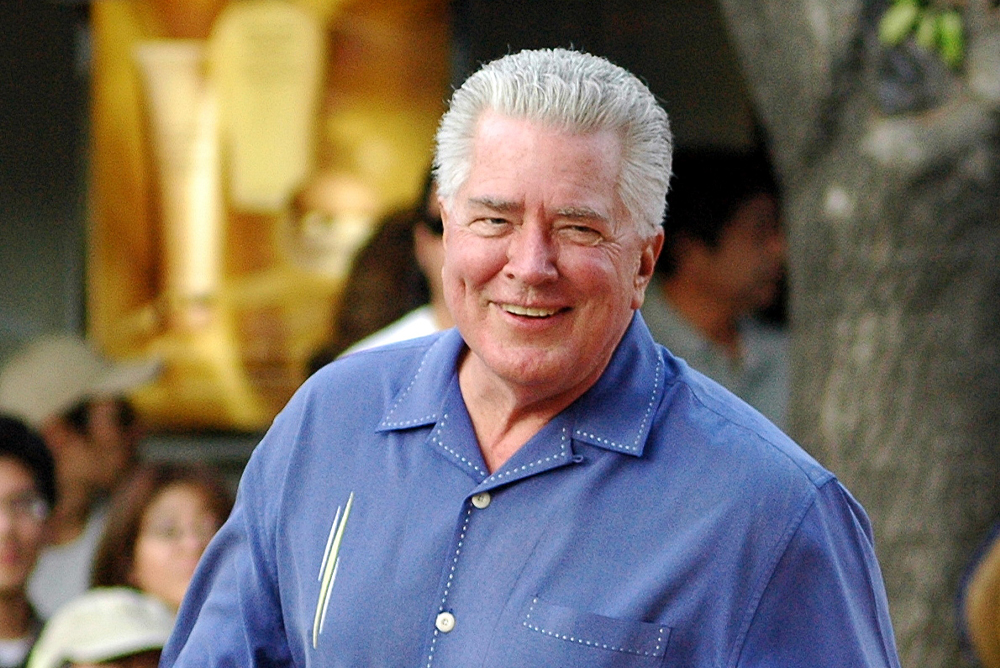
Why does the late Huell Howser (above) retain such a hold on Californians? Columnist Joe Mathews reflects on his legacy. Courtesy of Joits/Flickr (CC BY 2.0 DEED).
Zócalo is celebrating its 20th birthday! As part of the festivities, we’re publishing reflections and responses that revisit and reimagine some of our most impactful stories and public programs. Connecting California columnist Joe Mathews revisits Southern California author D.J. Waldie’s 2012 essay “The Darkness Behind Huell Howser” and considers why, over a decade after Howser’s death, the public TV’s great California chronicler retains such a hold on us.
“Do you know Huell Howser?”
I got that question recently while chatting with a counter guy at Erick Schat’s Bakery, which produces Dutch pastries and sheepherder bread in the Eastern Sierra town of Bishop.
It’s a question I get at least a couple times a year, in all different corners of California.
I suppose it’s a natural question. People might wonder if I, a longtime chronicler of California’s places, get asked if I know the public television reporter who took viewers into every little town and restaurant and museum, from Alturas to Zzyzx.
It’s a question that never ceases to amaze me. Or stump me.
Because the truth is that I can’t possibly know Huell Howser. And not just because I only met him a couple times. No one can possibly know Huell Howser anymore, because Huell Howser died 11 years ago, of prostate cancer, at age 67.
But the truth is also that people feel like they do know Huell Howser. Because he never really left us. His shows still air regularly on public TV stations in Southern California. And episodes of his California-exploring series—California’s Gold, California’s Green, Downtown, Road Trip with Huell Howser, and Visiting—still attract heavy traffic online.
Why does Huell Howser retain such a hold on us? The best answer to that question came from the Southern California author D.J. Waldie, in a Zócalo Public Square essay published shortly before Howser’s January 2013 death.
Waldie’s thesis was that Howser, in taking viewers to forgettable eateries and little-known places, was finding joy in the thing that Californians most cherish: our broken dreams.
Most people come to California, or grow up in California, dreaming of stardom or riches or invention or new and distinctive lifestyles. Instead, they end up sewing dresses in a little store in Tustin, or working at a dairy outside Turlock. You can feel pretty small doing that kind of work. But when Howser showed up, the public TV explorer in all his geeky ebullience, it made the life you settled for seem big.
“Howser wasn’t just pitching the muchness of California, an abundance anyone should be able to see unaided,” Waldie wrote. “He was pitching the almost infinite otherness within the ordinary of California, particularly when California is considered with joy.”
Waldie wrote that Howser’s deep connection with the regular “folks” of California was not his joy but “the melancholy behind his fierce public niceness.” His TV tours could strike sad notes, especially when his questions revealed wonderful old things that no longer existed. The same relentless dynamism that produces the many wonders of California also destroys the established. Our sunny love of the novel coexists with darkness and loss.
Howser liked to say that his goal was to encourage Californians to embark on their own personal adventures around the state, and investigate the places all around them. Howser modeled that kind of exploration, with a curiosity about everything that showed how fiercely unprejudiced he was.
As Waldie wrote, Howser was not urging Californians to take “a harmless field trip” but rather to begin “an encounter with the differences that reside, intractable, in everyday life—real differences between people, conditions, ethnicities, and cultures that can only be accepted for what they are and mostly with a smile.”
I don’t look or sound like Howser—he was a handsome TV guy with the distinctive accent of his native Tennessee, while I’m a rumpled print guy and fourth-generation Californian. But I suspect I get the “Do you know Huell Howser?” question because my reporting method is so similar to his.
That method: modestly planned, thoroughly unrehearsed wandering—which also happens to be the most practical way to get to know California.
Because Californians are so informal and so flaky (as anyone who has ever invited people to a dinner party knows), I rarely bother to schedule a bunch of interviews in advance when I’m visiting a town. It works much better to show up unannounced, act friendly, and start asking respectful questions about what people do.
I also say, as Howser did, “wow” and “gee whiz” when people are showing me things—a rusting old motorbike, a piece of street art, a loaf of bread—that would seem less than amazing to someone less geekily Californian.
There is no greater flattery in the Golden State than to take an interest in what others do. Californians, whatever their occupation, are instinctive artists, and asking them about their business or their home or their flea market—as Howser did—often elicits detailed and thoughtful responses.
That’s what I was doing at Schat’s. I had been pressing the counter guy. What is that bread? Can I try a piece? What makes it taste so good?
His answer to my last question was perfect: The best bread comes from the baker most determined to make sure you never forget it.




Send A Letter To the Editors